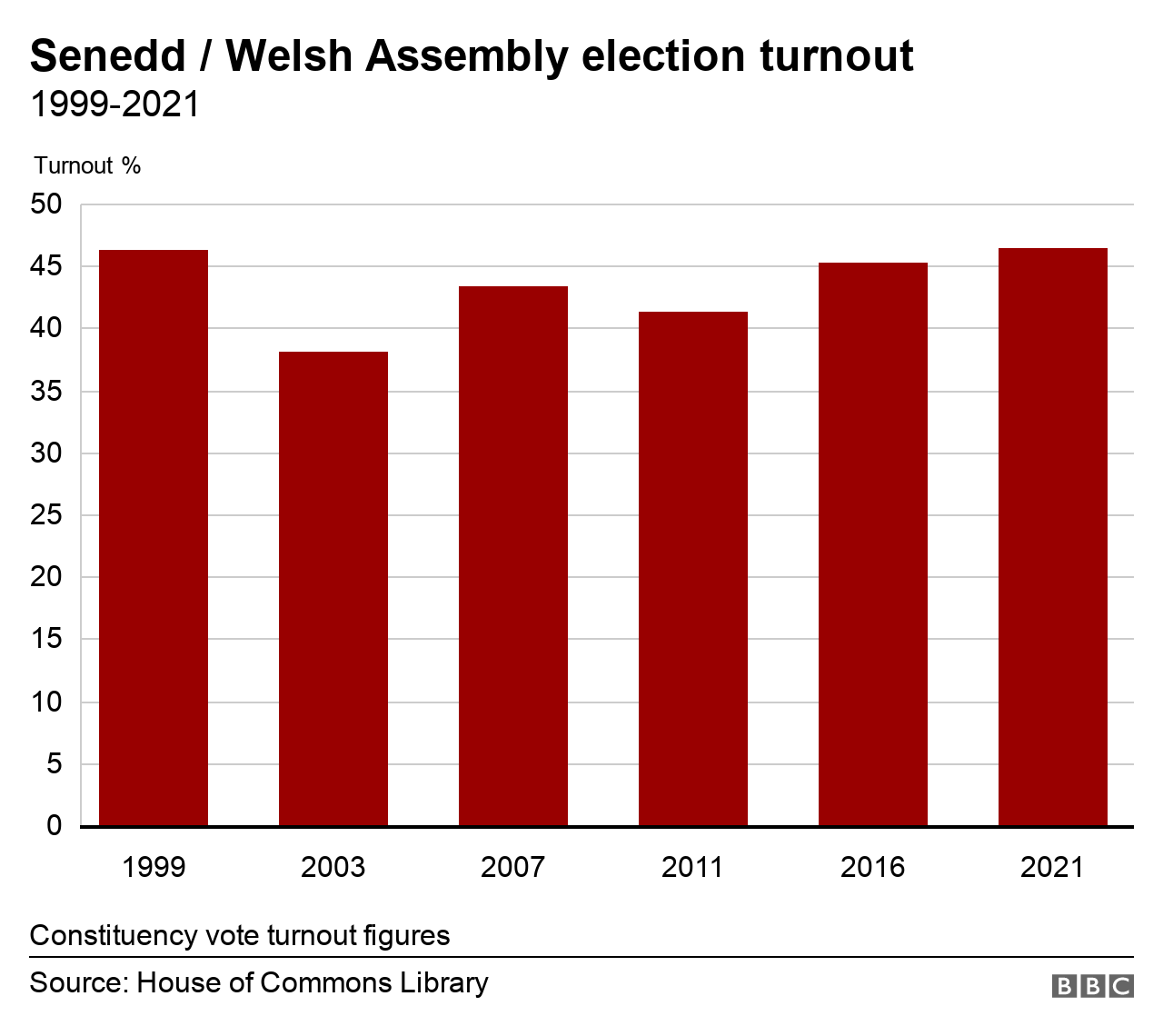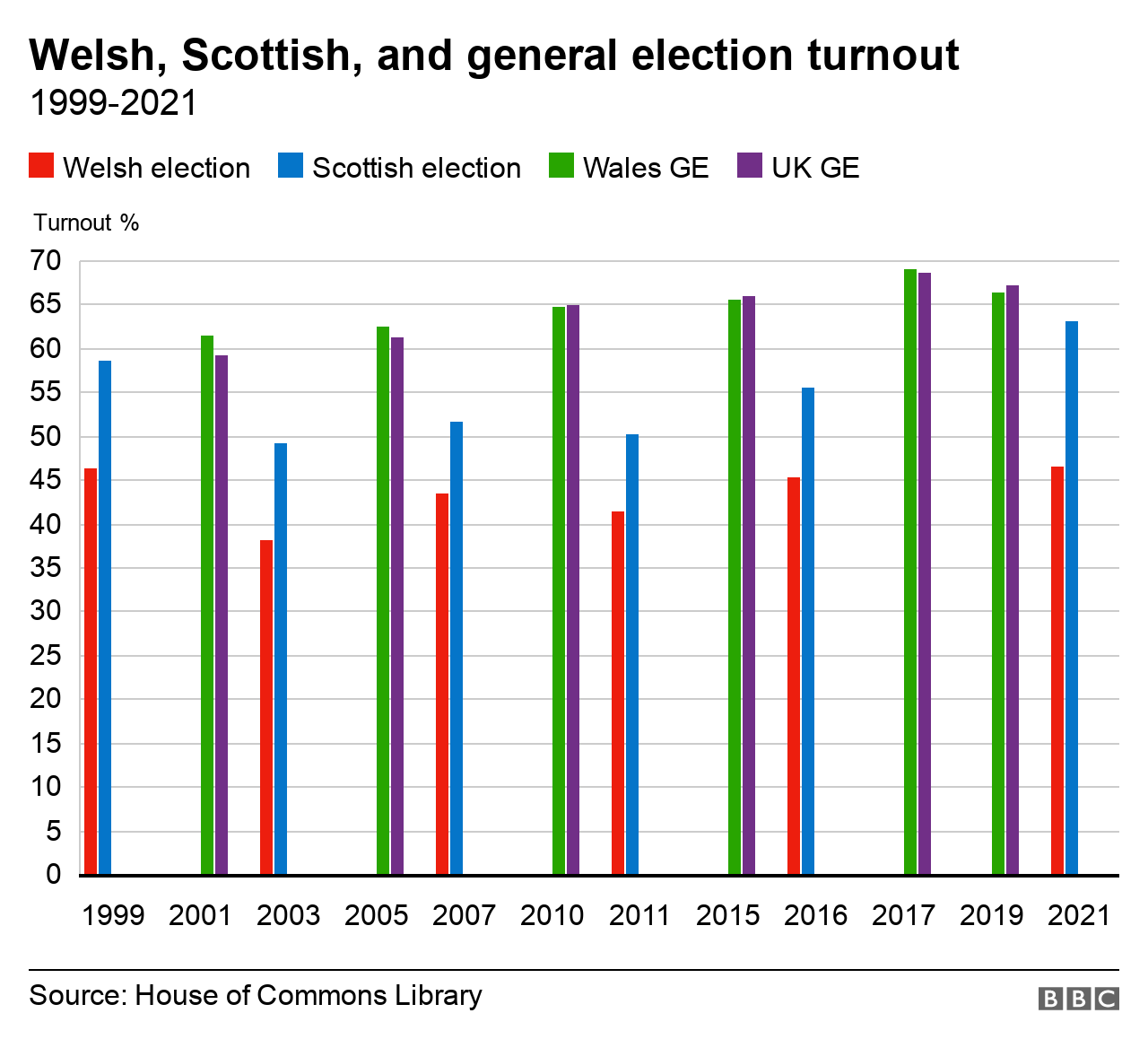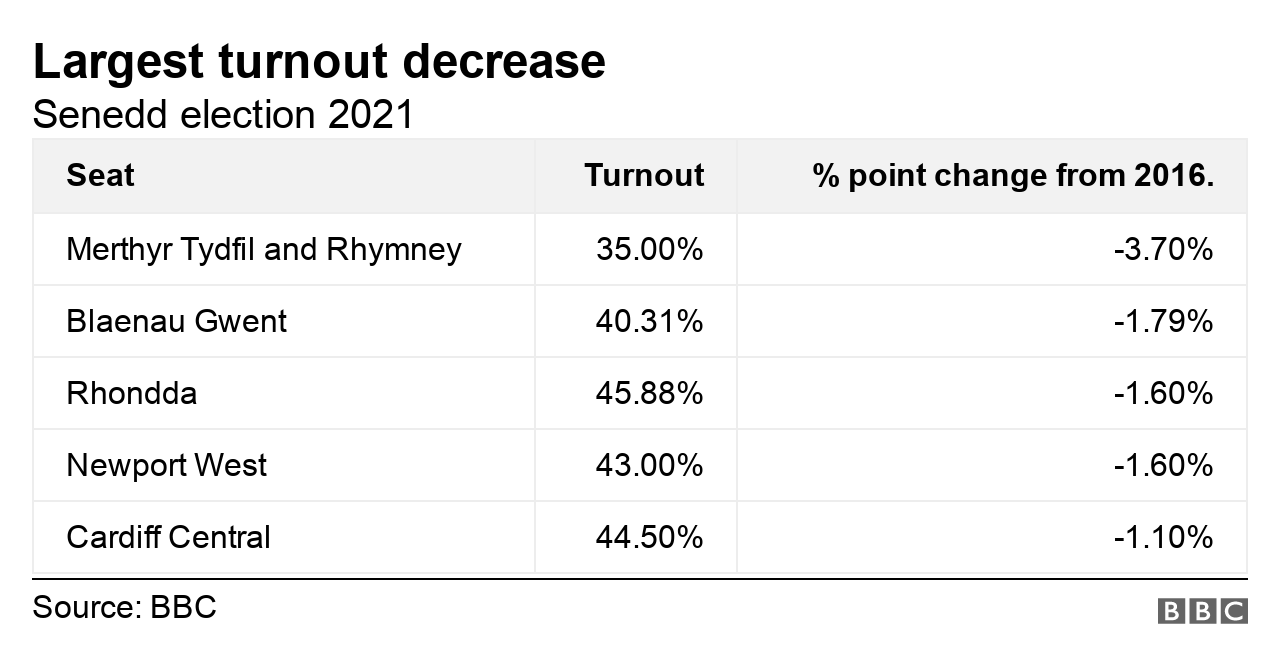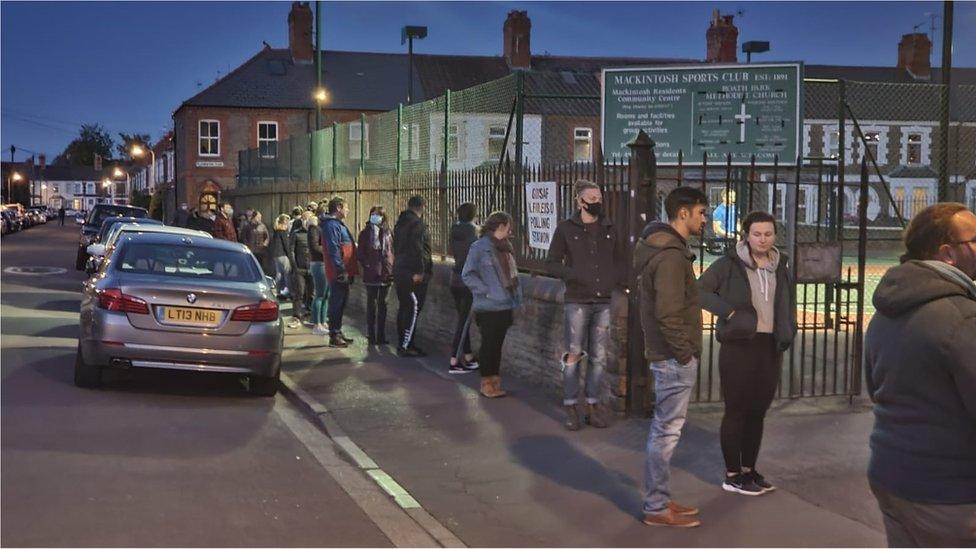Welsh election: Votes low compared to Westminster and Scotland
- Published
"I couldn't wait two-and-a-half hours to cast my vote"
Almost 2.4 million people in Wales were eligible to vote in the Senedd election on 6 May.
A record 1.1 million (47%) of them did turn out, with queues forming at some polling stations.
But it still meant more than half decided not to take part in the poll for the next Welsh Parliament, which saw Labour hold on to power by winning 30 seats.
Turnout for Senedd elections remains lower than for Westminster elections in Wales.
For the first time 16 and 17-year-olds had the right to vote in the Senedd election - but less than half even registered.
To find out more, BBC Wales asked for your reasons for voting - or not.
Lucy Price was one of the 53% who did not take part.
The 31-year-old from Cardiff said: "I always vote. This year I didn't.
"I didn't feel the policies for any party backed my beliefs."



Paul Madden said he felt he couldn't trust any party enough to vote for them
This year's election was also different for Paul Madden from Llandovery in Carmarthenshire.
He said he and his wife decided against casting a ballot.
"It seemed that all the main parties were singing from the same hymn sheet," the 72-year-old said.
"So the only choice was which party we could trust and, as our trust in politicians is at an all-time low, we could not trust any of them to deliver so we abstained this time round."
'My right and my responsibility'

Dorothy Tucker says she always votes to ensure she has her say in how the country is run
But for Dorothy Tucker, 73, from Newport, voting is a responsibility.
"I always vote: it is my right and my responsibility," she said.
"I want a say in how my country is run both locally and nationally, and women suffered imprisonment and force-feeding, and one died, to get me the right to vote."
Many people said they had to spend a long time queuing because of Covid restrictions - with some giving up before they were able to vote.
Others said they felt there was no candidate who matched their views, or believed that their vote would not make any difference to the result.
Why is turnout different between the Welsh and UK elections?

Turnout for Welsh elections is traditionally lower than for UK general elections and Scottish elections

Dr Jac Larner, a politics lecturer at Cardiff University and an investigator for the Welsh election survey, said the lower turnout figures in Wales did not necessarily reflect a lack of perceived importance in the Welsh Parliament.
He said: "We know from research that low voter turnout is actually a lot do to with people thinking they can't win in a devolved election, so they don't bother going to vote.
"That's different to a general election where, in Wales, Labour are still more likely to win a majority of seats, but at the UK level it's far more competitive."
Dr Larner pointed out that no devolved or local election in the UK matched the turnout at the general election, and so "using that as the benchmark might actually be wrong, it might actually make more sense for us to use other elections as the benchmark".
James Williams looks at how many people have turned out to vote in the past
Turnout for Senedd elections is also significantly lower than for that for the Scottish Parliament, with 63.2% of registered voters heading to the polls there.
"Scotland is in quite a unique political position at the moment, where the single most salient issue and the biggest cleavage in society - the issue of independence - basically is going to be determined by what happens at the Holyrood elections," Dr Larner added.
"Part of it is this idea of interest - there has always been more interest in the idea of a Scottish Parliament, the Scottish Parliament has always been more powerful than the Senedd, even going back to 1999."
However, this year turnout in Wales did increase from 45.3% in 2016 to 47%. The last time it was almost this high - at 46% - was for the first vote for Cardiff Bay, 22 years ago.
Dwyfor Meirionnydd saw the largest increase with 52% of eligible voters turning out, up 5.2 percentage points from 2016.


Only 14 constituencies out of the 40 had more than half of registered voters turnout on Thursday.
The area with the lowest turnout was Merthyr Tydfil and Rhymney, where 35% of registered voters cast a ballot.
The biggest fall in turnout was in one of the areas most hard hit by Covid-19, the Merthyr Tydfil and Rhymney constituency, where it fell by 3.7 points, with 35% turning out.
Neighbouring south Wales valleys communities also saw some of the largest falls, with Rhondda falling by 1.6 points to 46%, and Blaenau Gwent falling to 40%, down 1.79 points.


Dr Larner said the two largest factors in determining voter turnout between constituencies were their socio-economic make-up and the competitiveness of the seat.
"Basically, people with higher levels of formal education, people who own houses, people with more wealth essentially, are more likely to turn up to vote.
"Straight away, as you compare Cardiff North to Merthyr Tydfil, you see big differences there," he said.
"However, we also know there's a pretty strong relationship between how competitive a constituency is and turnout.
"That's not just in Wales, that's a general rule almost everywhere in the world - and Merthyr Tydfil, as we've seen in this election, is not competitive in any sense."
- Published30 April 2021

- Published5 May 2021

- Published7 May 2021
